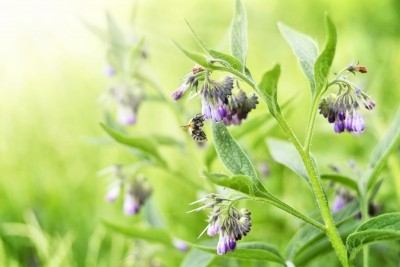New maximum pyrrolizidine alkaloid levels in supplements to come into force this month

In amended regulation, the EU has set a maximum level of 400 micrograms (μg) per kilogram (kg) of the alkaloid permitted in food supplements containing herbal ingredients that includes plant-based extracts.
The regulation, published in December 2020, also allows a maximum level of 500 micrograms (μg) per kilogram (kg) of pyrrolizidine alkaloids in pollen-based food supplements and pollen-based products.
Explaining why a long transitional period was required, the European Commission said foodstuffs covered by the regulation had a long shelf life of up to three years.
Long transitional period
“It is appropriate to provide for a significantly long transitional period so that foodstuffs which have been lawfully placed on the market before the date of application of this Regulation can remain sufficiently long on the market,” the Commission adds.
“A transitional period of 18 months is appropriate to enable the selling to the final consumer of the products produced before the date of application.”
In July 2017, the Authority published a statement on the risks for human health related to the presence of pyrrolizidine alkaloids in honey, tea, herbal infusions and food supplements.
Here, the CONTAM Panel established a new reference point of 237μg/kg body weight per day to assess the carcinogenic risks of pyrrolizidine alkaloids.
The Panel concluded that there is a possible concern for human health related to the exposure to pyrrolizidine alkaloids, in particular for frequent and high consumers of tea and herbal infusions in the general population but, in particular, for the younger groups of the population.
‘Good agricultural and harvest practices’
The Commission adds that the presence of pyrrolizidine alkaloids in foods can be minimised or prevented by the application of “good agricultural and harvest practices.”
“The setting of maximum levels ensures that good agricultural and harvest practices are applied in all production regions to ensure a high level of human health protection.
It is therefore appropriate to set maximum levels in foodstuffs which contain significant levels of pyrrolizidine alkaloids, and which therefore contribute significantly to the human exposure, or which are of relevance for the exposure of vulnerable groups of the population.
The Commission also adds that certain production regions, good agricultural and harvest practices have only been recently introduced or have still to be implemented.
“It is appropriate to provide for a reasonable period to allow all production regions to introduce such practices.
“Two growing seasons are necessary for a full implementation of the good agricultural and harvest practices to ensure sufficient supply for food business operators to produce foodstuffs that comply with the new requirements set out in this Regulation,” they conclude.








